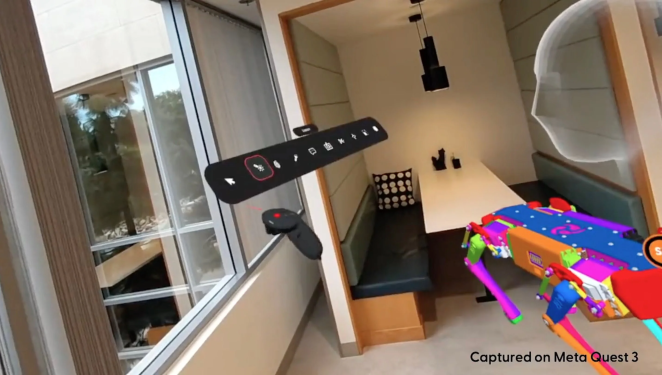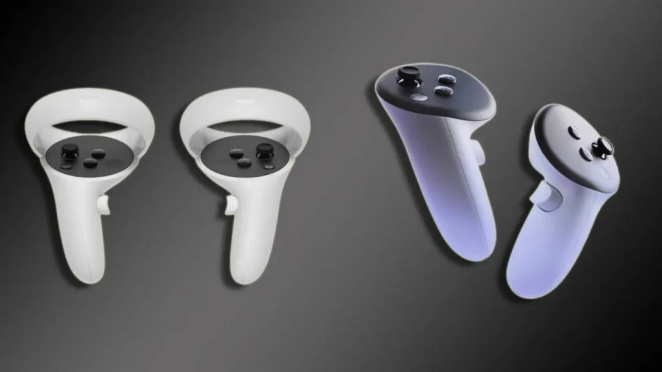It’s probably safe to say that VR hasn’t really “taken off” in quite the way we all thought it would a few years ago. Back in the halcyon days of 2014, when the Oculus Rift gained enough cultural traction to be parodied by South Park, many assumed that, 10 years later, VR headsets would be as ubiquitous as our smartphones. Indeed, according to Kantar, only 6% of adults (3.2 million people) claim to own a VR headset and interest in buying one in the next 12 months is relatively low amongst consumers. But that only paints a small part of the picture.
Among creatives (myself included), VR has played a subtle hand in shaping countless ideas and has been a part of some of the most transformative projects. Indeed, I struggle to name a single gaming experience from the last decade as profound as Half Life: Alyx and a single piece of creative software that’s captured my imagination as significantly as Tilt Brush.

I was an early adopter of VR, jumping first on the original PSVR at launch and then falling in love with the Meta Quest 2 several years later. The leap forward felt like a night and day shift, and I was fully expecting the same kind of leap when I eventually upgraded to the Meta Quest 3. In that regard I certainly wasn’t disappointed. The big step forward this time, arguably, is the front-facing cameras, which open fresh worlds of potential in the AR space and the ability to seamless blend the worlds of AR and VR.
However, I personally feel the barrier to entry, for most people, remains the price and while the Meta Quest 3 is exceptional (more on that later) it does retail for well over £400. So, could a competing device, (the £80 Zapbox) retailing for almost 5 times less, prove an enticing gateway into this increasingly intriguing world? Or is the Oculus Quest 3 the definitive VR headset that all creatives should be adding to their Christmas lists this year? I’ve spent the best part of the last few weeks with both devices and here are my honest thoughts on the Meta Quest 3 (the Zapbox review will follow later this week).
Entering the Metaverse
If you’re looking for a device that balances comfort, price and performance then let’s cut to the chase – the Meta Quest 3 (MQ3) is really the only serious practical option that exists in the VR/AR space for most creatives looking to get in on the ground floor.
While more powerful devices do exist, they are almost exclusively tethered to computers or games consoles and demand exceptional GPU and CPU power that only those working exclusively in computer graphics will have direct access to. Not only that, but they bank on you effectively having a large empty room available in your home to dedicate specifically to VR.
The MQ3, meanwhile, sets a new standard that blurs the line between entry level and professional use. I could wax lyrical on the graphical superiority, but this isn’t that kind of site. We’re interested about the practical uses and those are seemingly endless. Why? Two words – “colour passthrough.”

You see, while the Meta Quest 2 allowed you to step tentatively into the world of AR in low-res black and white, the MQ3 takes a running jump into it with a surprisingly sharp and bold full colour passthrough display. Experiencing it for the first time was a genuine revelation but what really sold it for me was Open Brush (formerly Tilt Brush).
If Alyx was the VR unit shifter for gamers, then this should almost certainly be the unit shifter for creatives because the ability to create a fully 3D image inside an augmented space with minimal lag and a surprising depth of options feels almost (dare I say it) magical. The applications here are incredibly exciting; whether its designers working collaboratively in a mixed digital/physical space or thought leaders sharing a virtual space across vast distances while feeling like they are literally creating in real-time together in the same room.
It’s the first time I’ve experienced something this affordable and practical that felt like science fiction and it’s all the little things that come together and make it such a powerful and game-changing unit. Let’s break it down a little bit, shall we?
Picture in Picture
One of the most exciting and practical uses for VR/AR that very few people seem to be talking about is the concept of virtual monitors. In the most basic terms, this effectively means donning a headset and using virtual screens from within the ‘metaverse’ environment to carry out work.

The applications of a ‘monitor replacement’ option range from space saving in more ‘petite’ offices to a deeper level of immersion and the pass-through on the MQ3 is perfectly placed to allow for this kind of functionality.
Perfect Control
One of the aspects of the MQ3 that doesn’t appear to have been pushed as strongly as the more dazzling hardware advancements are the controllers it comes with. The tracking on these things is perfect thanks to the use of next-gen IR LEDs and advanced haptics.

More shockingly, you don’t even technically need to controllers at all, as the hand tracking options are now less of a gimmick and are genuinely useable. This is another barrier to entry for some that’s effectively been removed, or at very least minimised.
Performance
The one minor complaint I have to level against the MQ3 is that there are no serious improvements in battery life. Of course, given the major performance boost offered by the Snapdragon XR2 chip and the smaller, more ergonomic design of the device itself, that’s hardly surprising.

But I rarely got any less than two hours of use of out the MQ3 and there’s always the option of extended battery packs to consider. Speaking of performance, from the surprisingly deep built-in sound to the instantly noticeable image upgrade (it felt like putting on corrective lenses for the first time) and buttery smooth framerates, I honestly can’t believe what an upgrade we’re seeing here.
Professionalism
For creatives that might have balked at the price tag of last year’s Meta Quest Pro, the Meta Quest 3 is an easy sell. The fact it can connect wirelessly via AirLink to your desktop PC or laptop also opens up thousands of potential applications that make it a far more compelling option than the ludicrously priced Apple Vision Pro.
Will it stand the test of time? Who knows, but as far as creative Christmas gifts are concerned, if you have a few hundred quid spare you honestly couldn’t do much better. And if you don’t have a few hundred quid spare? Join me again on Thursday!




